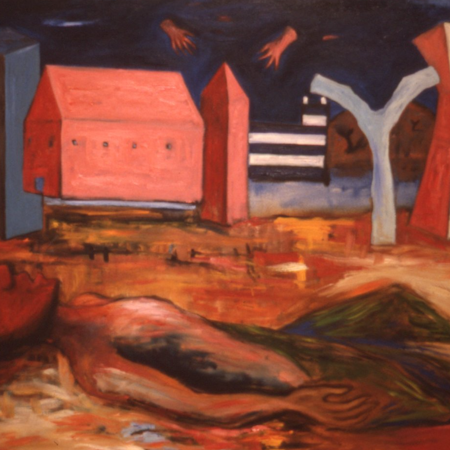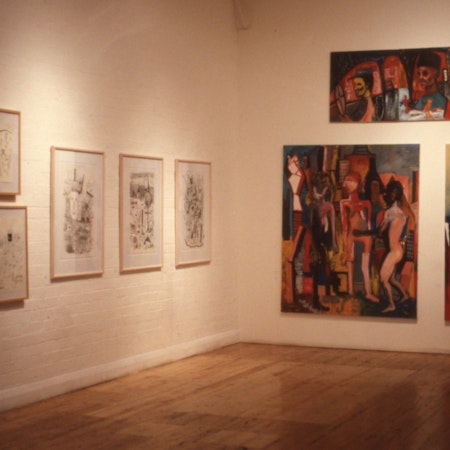The paintings are about allegorical symbols and familiar archetypal images rather than specific narratives or events. The King and Queen came out of a formal concern that I had within the idea of painting two figures. I wanted them to be linked psychologically, to be a couple. The most obvious archetype was a king and a queen. The peripheral images are loaded symbolically but can be interpreted freely, as in surrealist painting.
I begin by painting a topic, which is usually autobiographical, or 'disguised social painting'. I am interested in the dream state because it combines the cerebral with the emotional and the irrational. This explains why the paintings often contain grotesque and incongruous elements.
l use the landscape as a metaphor of self, or of a state of mind. It often represents melancholy, isolation, estrangement. The City Life paintings and Dream are good examples of this. Similarly, the sculptural forms which appear in many of the paintings are metaphors for urban life.
The fragmented, whimsical qualities in the work have evolved directly from the processes of drawing and doodling. The earlier drawings were like "lists" of random images, freely associated. Now perspective and modelling are becoming more important because they make the images less cartoony, more potent.
Peter Walsh in Conversation with Louise Neri
Peter Walsh, Shark Boy, 1984, oil on canvas, 60x100cm. Photo courtesy of Gertrude Archives.
'I am interested in the dream state because it combines the cerebral with the emotional and the irrational.'
By Peter Walsh and Louise Neri
